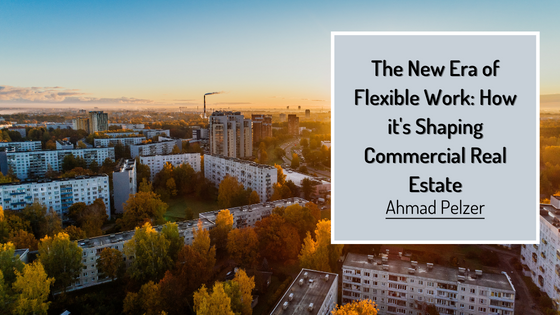The rise of flexible work arrangements has revolutionized the way we approach work. With the advent of technology and changing work culture, businesses and employees are embracing flexibility like never before. This shift has significant implications for commercial real estate, transforming how office spaces are designed, utilized, and valued. Let’s explore how the new era of flexible work is shaping commercial real estate.
Coworking Spaces and Shared Offices: One of the significant changes in commercial real estate is the surge in coworking spaces and shared offices. These flexible workspaces cater to individuals and businesses seeking short-term or on-demand office solutions. They provide a collaborative environment, shared amenities, and the flexibility to scale up or down based on business needs. The popularity of coworking spaces has led to the development of specialized coworking facilities and partnerships between commercial real estate developers and coworking providers.
Demand for Agile and Adaptable Spaces: Flexible work arrangements have spurred a need for agile and adaptable office spaces. Companies now require versatile layouts that can accommodate changing work dynamics. Open floor plans, modular furniture, and movable partitions are becoming standard features, enabling companies to reconfigure their spaces to suit various activities and team sizes. Flexibility in design allows businesses to optimize space utilization, promote collaboration, and cater to evolving work preferences.
Emphasis on Amenities and Well-being: With increased flexibility, office spaces are no longer places to work but also spaces that promote employee well-being and productivity. Commercial real estate developers incorporate fitness centers, wellness rooms, lounge areas, and outdoor spaces to create a conducive work environment. Additionally, access to nearby amenities like restaurants, cafes, and green spaces is crucial for businesses when selecting office locations.
Remote Work and Distributed Workforce: The rise of remote work and distributed teams has profoundly impacted commercial real estate. Companies are reconsidering their need for large, centralized offices and are embracing a hybrid model that combines remote work with occasional in-person collaboration. This shift has led to reassessing office space requirements, focusing on creating satellite offices or smaller hubs strategically located to serve dispersed teams.
Technology Integration: Technology integration is crucial in meeting the needs of flexible work environments. Smart office solutions, IoT devices, and collaboration tools enable seamless connectivity, remote access, and efficient space management. Commercial real estate developers invest in technologies that enhance the user experience, provide real-time data on space utilization, and facilitate agile workspace management.
Repurposing and Redevelopment: The shift towards flexible work has prompted the repurposing and redeveloping of commercial real estate properties. Vacant or underutilized office spaces are transformed into mixed-use developments combining office spaces, residential units, retail outlets, and recreational facilities. This adaptive reuse maximizes the value of existing properties and meets the evolving needs of communities and businesses.
The new era of flexible work has had a transformative impact on commercial real estate. Coworking spaces, agile office designs, emphasis on amenities and well-being, the rise of remote work, technology integration, and property repurposing are shaping the future of the commercial real estate. As businesses and employees embrace flexibility, commercial real estate developers and investors must adapt to the changing landscape and design spaces that foster collaboration, productivity, and employee well-being. By recognizing and responding to the needs of the evolving workforce, commercial real estate can thrive in the era of flexible work and contribute to the success of businesses and the satisfaction of employees.
